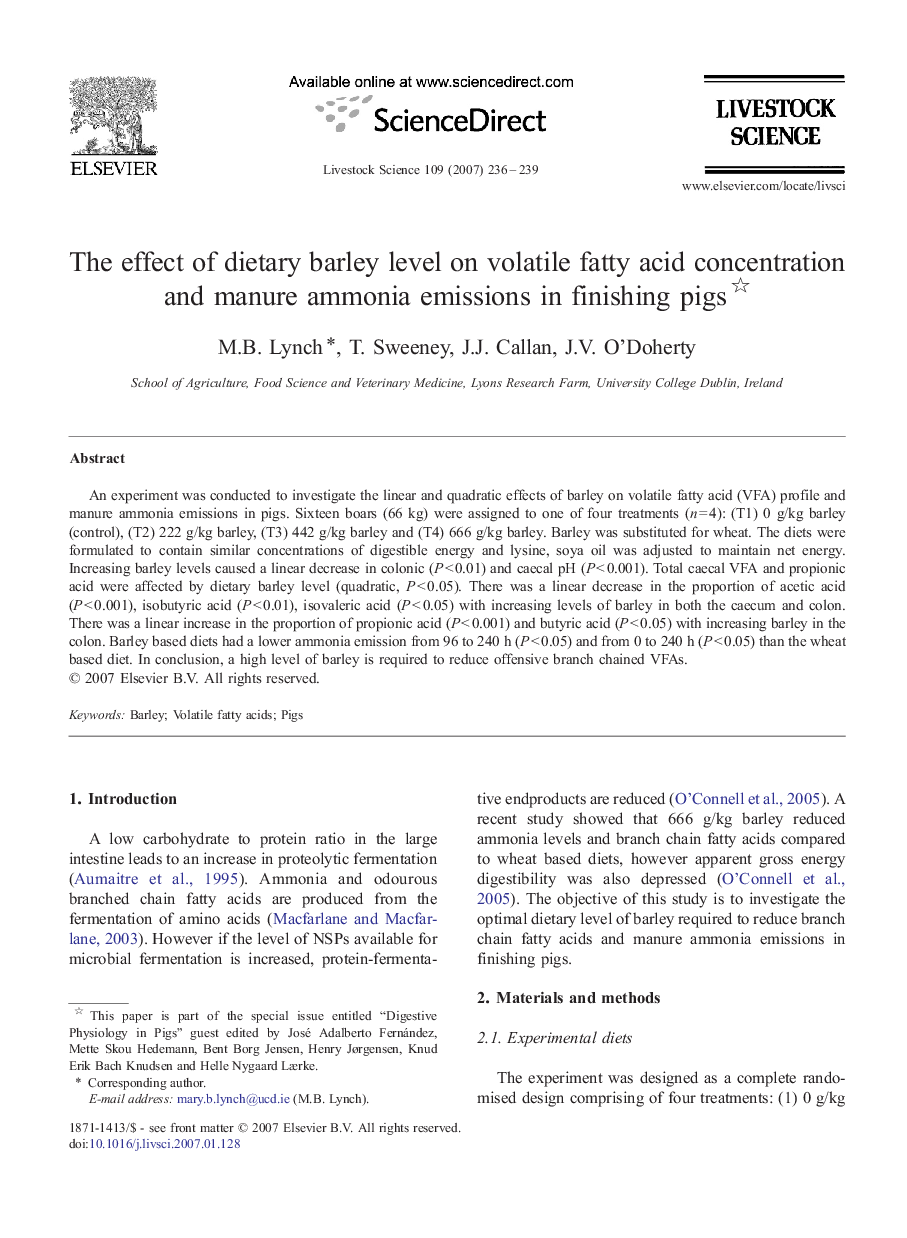| Article ID | Journal | Published Year | Pages | File Type |
|---|---|---|---|---|
| 2448911 | Livestock Science | 2007 | 4 Pages |
Abstract
An experiment was conducted to investigate the linear and quadratic effects of barley on volatile fatty acid (VFA) profile and manure ammonia emissions in pigs. Sixteen boars (66 kg) were assigned to one of four treatments (n = 4): (T1) 0 g/kg barley (control), (T2) 222 g/kg barley, (T3) 442 g/kg barley and (T4) 666 g/kg barley. Barley was substituted for wheat. The diets were formulated to contain similar concentrations of digestible energy and lysine, soya oil was adjusted to maintain net energy. Increasing barley levels caused a linear decrease in colonic (P < 0.01) and caecal pH (P < 0.001). Total caecal VFA and propionic acid were affected by dietary barley level (quadratic, P < 0.05). There was a linear decrease in the proportion of acetic acid (P < 0.001), isobutyric acid (P < 0.01), isovaleric acid (P < 0.05) with increasing levels of barley in both the caecum and colon. There was a linear increase in the proportion of propionic acid (P < 0.001) and butyric acid (P < 0.05) with increasing barley in the colon. Barley based diets had a lower ammonia emission from 96 to 240 h (P < 0.05) and from 0 to 240 h (P < 0.05) than the wheat based diet. In conclusion, a high level of barley is required to reduce offensive branch chained VFAs.
Keywords
Related Topics
Life Sciences
Agricultural and Biological Sciences
Animal Science and Zoology
Authors
M.B. Lynch, T. Sweeney, J.J. Callan, J.V. O'Doherty,
